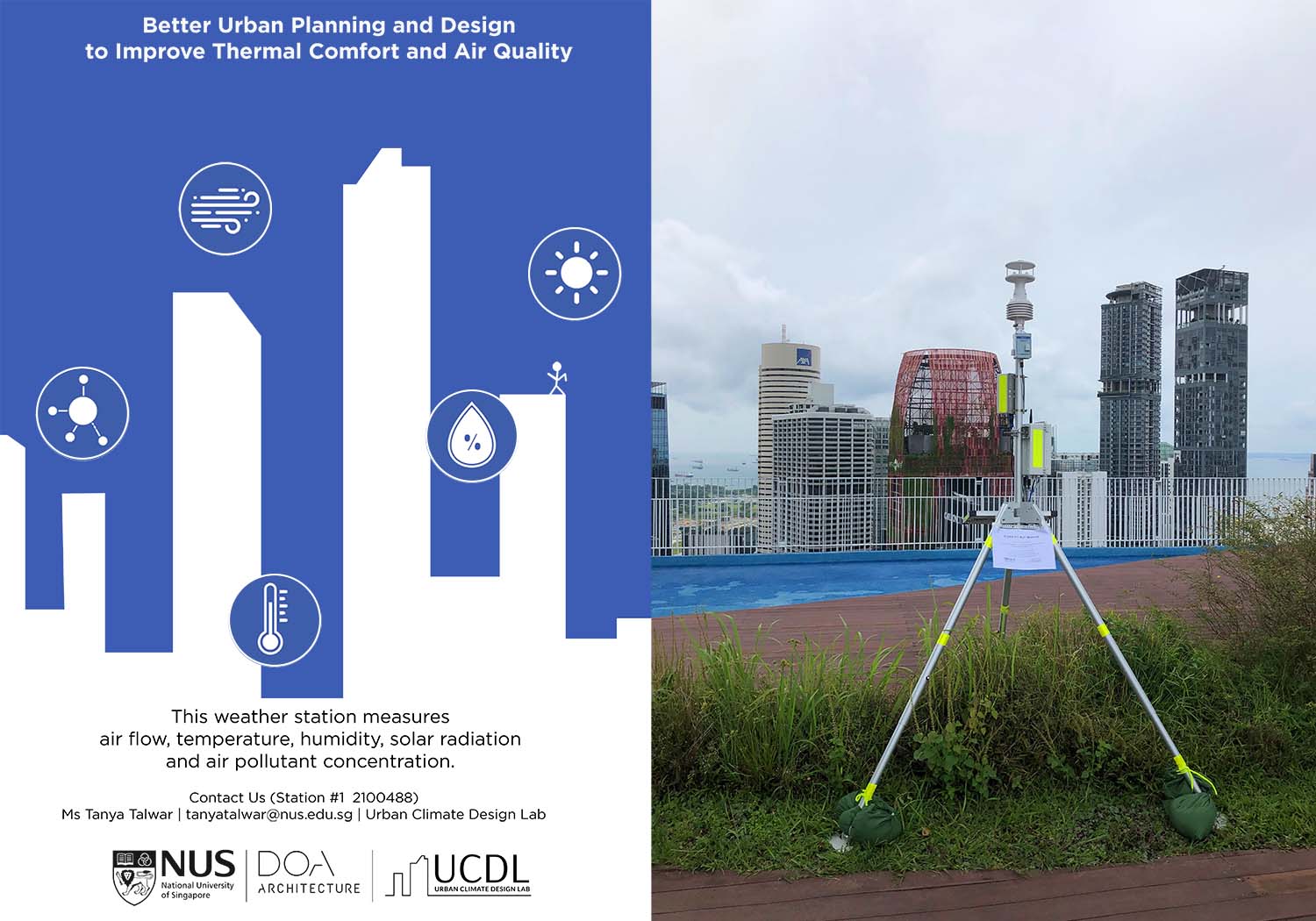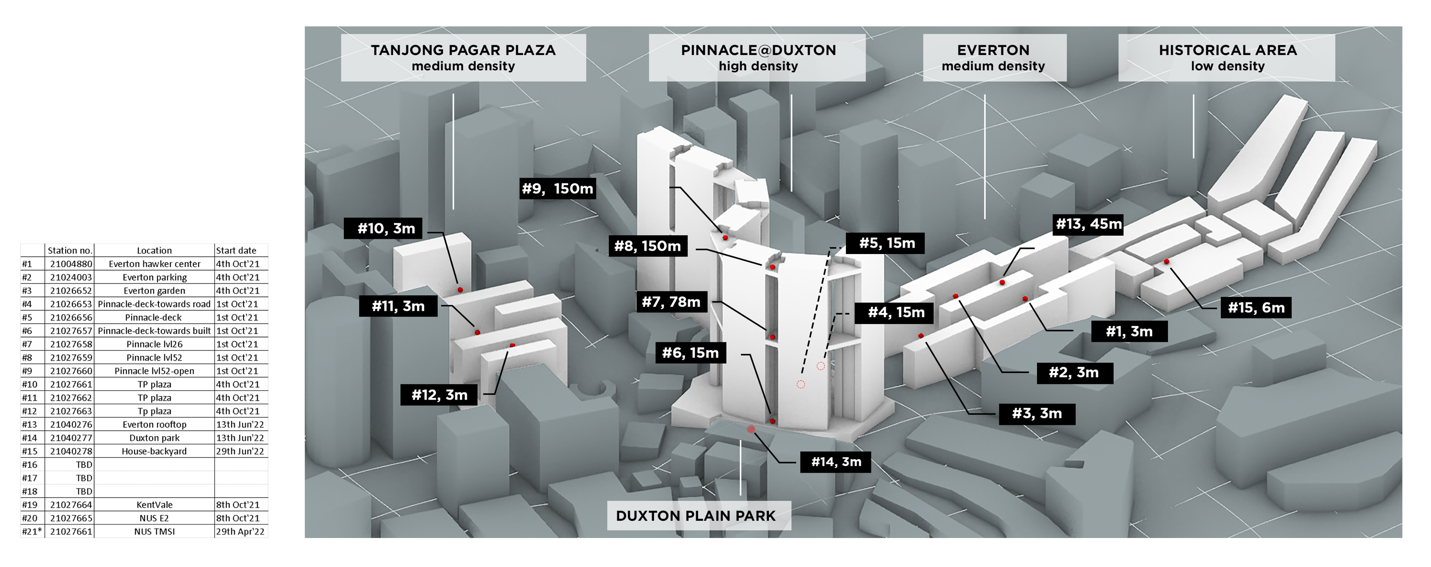Air Pollution
IoT Microclimate Sensing Network

This Internet of Things (IoT) microclimate sensing network is set up by Urban Climate Design Lab to investigate the impact of various urban planning and design on microclimate at built-up areas. The thermal comfort-related index (i.e., wind vector, relative humidity, air temperature, and solar radiation) and air quality-related index (i.e., PM 1.0, 2.5, and 10) have been measured, and real-time data have been automatically sent to our on-line server, by IOT. Advanced measurement technologies, such as ultra-sonic anemometers, are applied.
The IoT microclimate sensing network includes 18 weather stations, which are mainly installed at the residential areas, covering high-, medium- and low-density areas. The measurement data will be used to conduct research to clarify how design and planning affect microclimate and living environment, to make communities and residents more climate resilient. The research programme is supported by both Presidential Young Professorship @National University of Singapore and Future Resilience System II programme @Singapore-ETH Centre.


Figure. Locations of weather stations.
Proposed Outputs:
- Long-term weather data at the neighbourhood scale, which could be used to develop and validate microclimate weather prediction models;
- Measurement data will be used to validate numerical simulation and analytical models;
- Understandings on the impact of urban morphology on the air temperature and wind speed in high-density residential areas in Singapore;
- Design recommendations to mitigate the UHI effect and improve thermal comfort in residential areas.